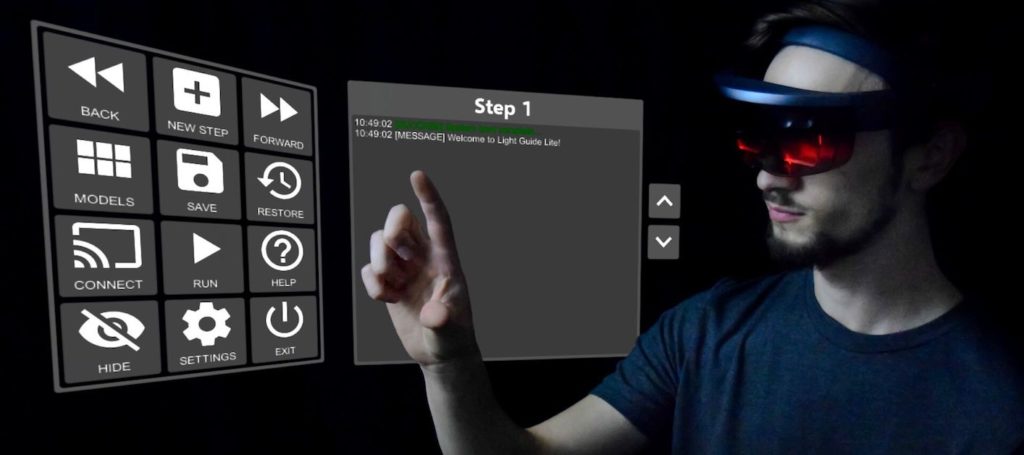
Manufacturers constantly need to keep an eye out for the latest, most valuable technology to aid their operations. Over the past few years, augmented reality has gained popularity across a wide variety of industries and applications.
However, while doing research, manufacturers find hundreds of resources that rarely define the real use cases of the different AR types. Then, they are often left wondering: which type of augmented reality should I use?
Currently, there are three main types of AR being used to support manufacturing and assembly operations: tablet AR, wearable AR, and projection-based AR.
Of those three types, wearable AR stands out due to its comparisons to consumer-grade headsets. But, just because they work for gamers does not mean that wearables are the best option for every factory application. Business leaders need to consider the different pros and cons of wearables on the factory floor before deciding whether to use them.
Wearable Augmented Reality
Wearable AR technology projects an overlay of graphics onto the environment around you through glasses or a headset.
Most people know about wearables like Google Glass and Microsoft Hololens. These act as lightweight, hands-free computers to display and store information.
Benefits of Wearable AR
Compared to tablet-based AR, wearable technology is a popular choice in factories due to its mobility and dynamic graphics.
The first benefit of wearables over tablets is that they are hands-free. Workers increase their productivity by handling tools while simultaneously reading work instructions.
This directly affects the second benefit; wearables move work instructions closer to the operation. They put information closer to where you need to see it rather than needing to look back and forth between a tablet or monitor and a workstation. Therefore, a worker does not need to look away from their work and completes it faster.
Wearable Trade-Offs
On the other hand, wearables have many of the same issues as gaming headsets—and occur more often.
Like gaming headsets and tablets, wearables require battery power. The same issue occurs, where the time needed to charge the technology takes away from overall efficiency. Typical battery life is three to four hours. So in many cases, you need to stop and charge or change out batteries multiple times through a shift.
They also connect to wifi networks and cause the same security issues as tablets. But, because wearables can hold more complex software systems, there is the added drawback of information delays. This is especially relevant in high-volume operations, where large amounts of information try to come in but are hindered by a slow wireless connection. Between the amount of time needed to charge and delays in information, hours could be wasted.
From a safety standpoint, wearables can easily obstruct the operator’s vision and have been known to cause users to feel dizzy or nauseous. Like tablets, the smaller digital screen strains worker’s eyes and is not designed for prolonged use. They also block a worker’s field of vision, putting them at risk of workplace hazards.
On top of all that, there could be issues with workers using the wearables at all. In the age of COVID-19, health concerns are more prevalent than ever. Many people are cautious of how close they are to others and what they touch after someone else uses it. On the factory floor, this could appear as a worker on shift two not wanting to use the same headset as a worker from shift one. And it is unlikely that individual headsets would be bought for each worker.
Limited Wearable Benefits
With all of this in mind, it is important to understand the application and if wearables are a good fit.
Overall, wearables are best used in field servicing and warehousing applications. These applications usually do not communicate a lot of proprietary information and they are one of the most reliable options to serve the mobility and remote guidance needed.
To find out more about AR applications on the factory floor, contact our team or request a demo.


